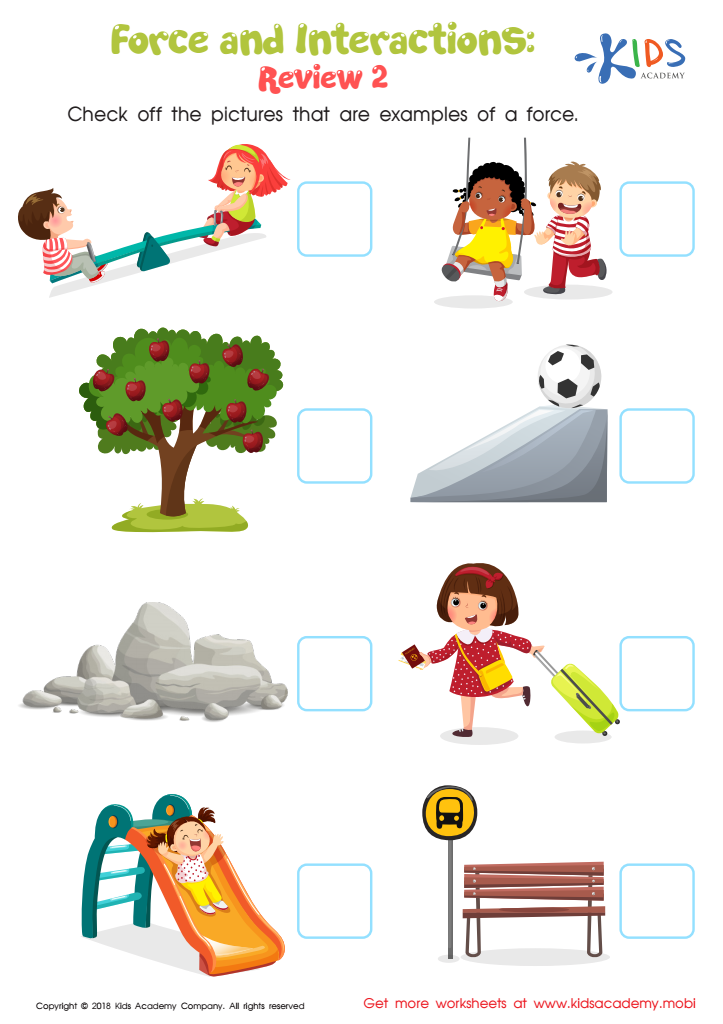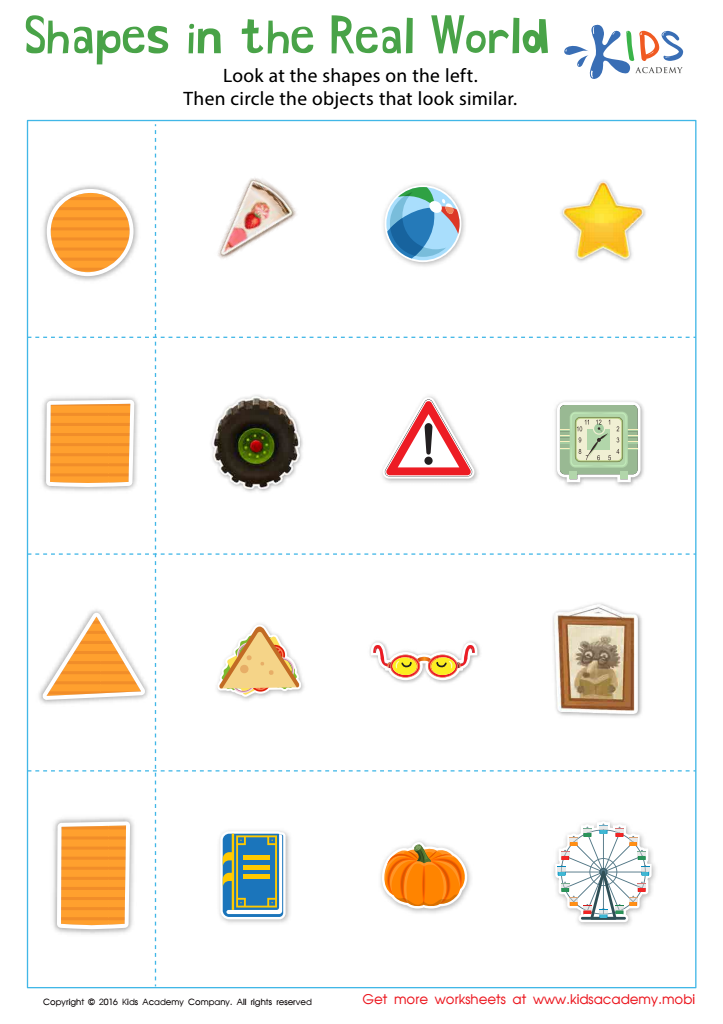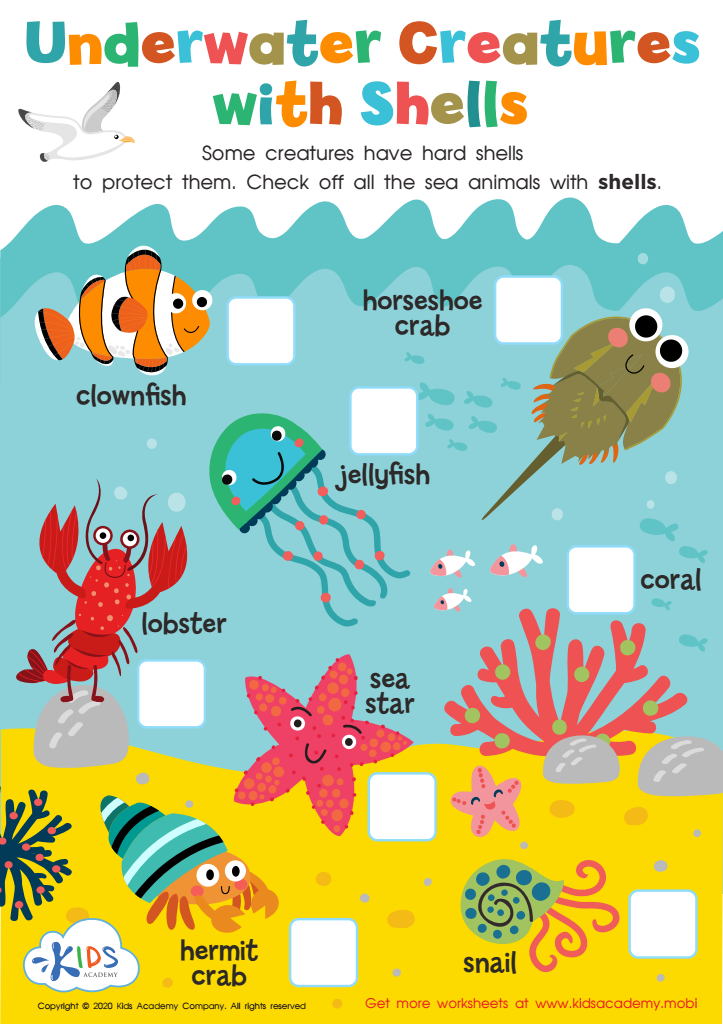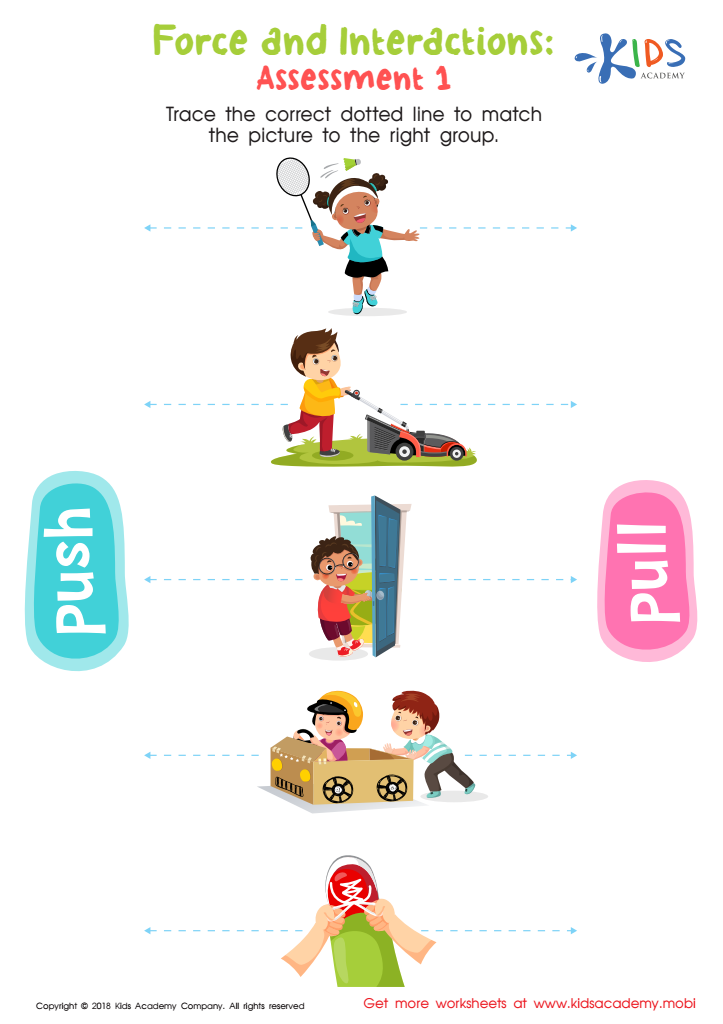Shape Recognition Science Worksheets for Ages 4-7
5 filtered results
-
From - To
Boost your child's early science skills with our engaging Shape Recognition Science Worksheets for ages 4-7! Designed to make learning fun, these worksheets focus on helping young learners identify and understand various shapes through creative activities. With colorful illustrations and age-appropriate challenges, children will explore shapes in their environment while enhancing their observational skills. Our worksheets also promote critical thinking and problem-solving, ensuring a well-rounded educational experience. Ideal for home or classroom use, these resources are perfect for fostering a love for learning in science. Discover the joy of shape recognition and watch your little ones thrive!


Force and Interactions: Review 2 Worksheet


Shapes in the Real World Worksheet


Will It Make a Shadow? Worksheet


Underwater Creatures with Shells Worksheet


Force and Interactions: Assessment 2 Worksheet
Shape recognition is a fundamental aspect of early childhood education that significantly shapes a child's cognitive and spatial development. For children ages 4 to 7, recognizing and understanding shapes fosters critical problem-solving skills, as it forms the foundation for more complex concepts in mathematics and science. Shapes are not only the building blocks for geometry but also help children categorize and make sense of the world around them.
Parents and teachers should prioritize shape recognition because it enhances children’s observational skills, attention to detail, and ability to recognize patterns. Engaging in activities involving shapes nurtures creativity through art and design, while also promoting fine motor skills through hands-on experiences like building and drawing.
Furthermore, shape recognition encourages language development. As children learn to identify and name shapes, they expand their vocabulary and communication skills. This area of learning supports socio-emotional growth as kids share their observations, collaborate in group activities, and build confidence in their abilities.
Incorporating shape recognition into early education not only prepares children for future academic success but also lays the groundwork for logical reasoning and critical thinking, which are essential skills for lifelong learning and problem-solving.
 Assign to My Students
Assign to My Students


















